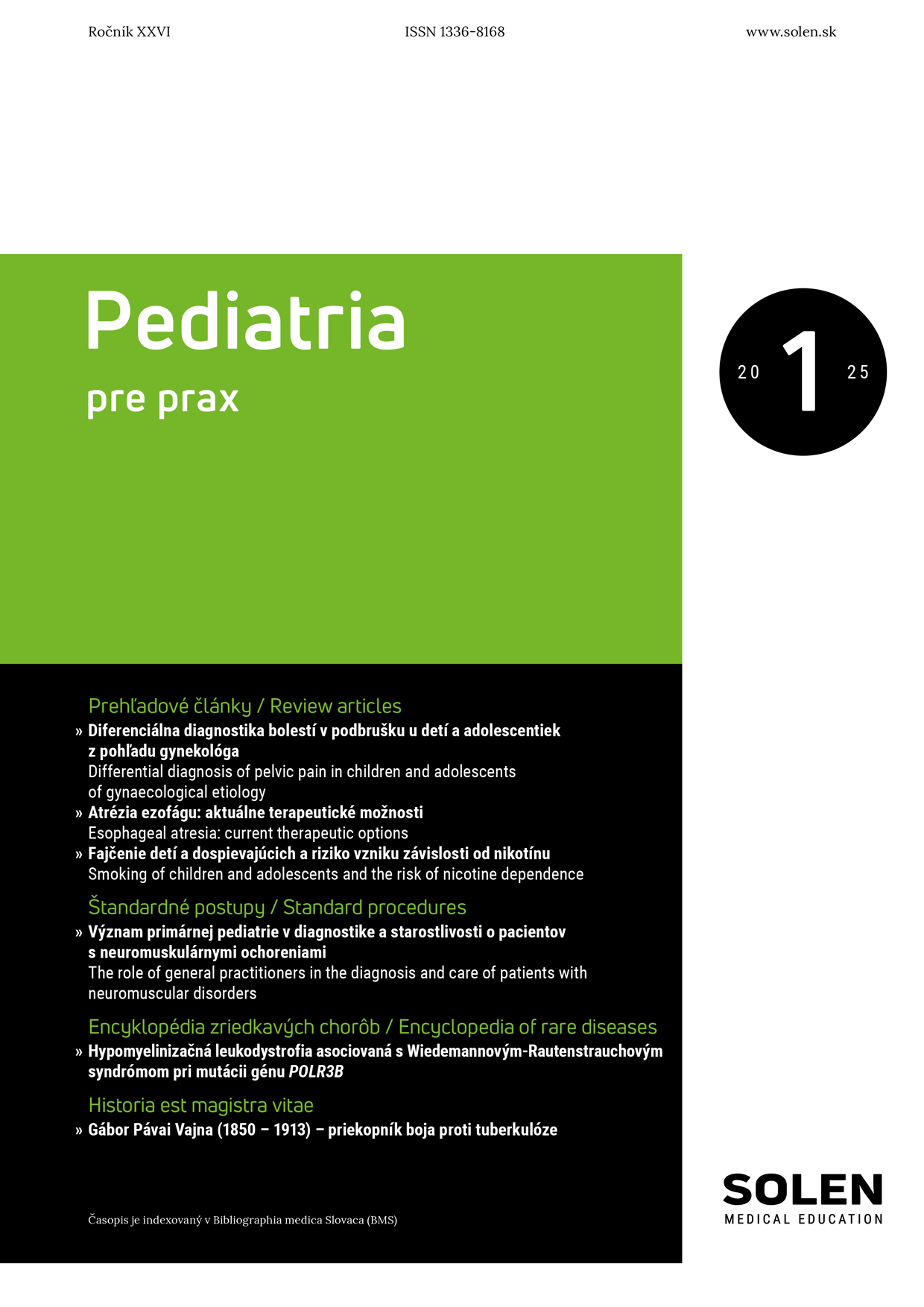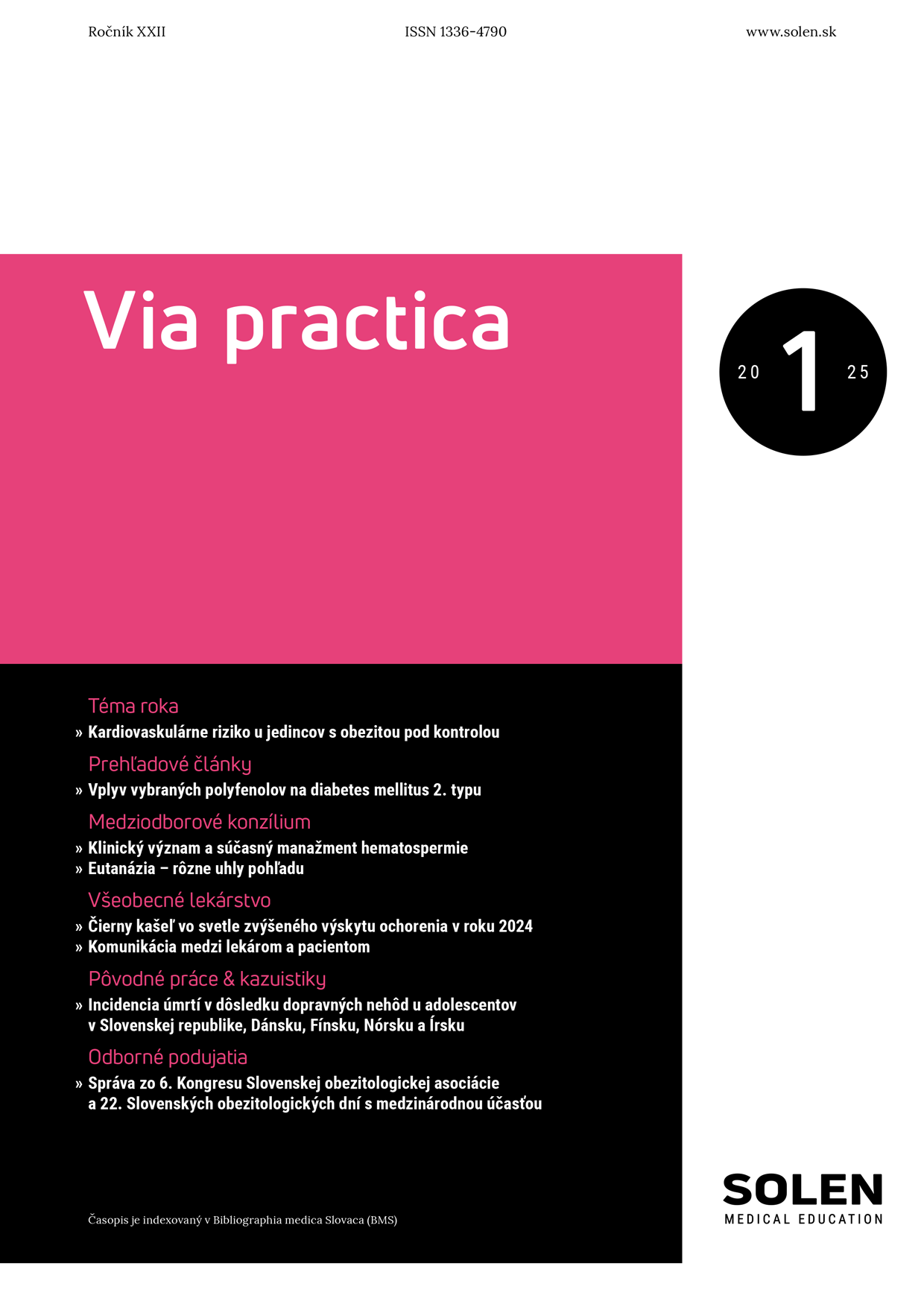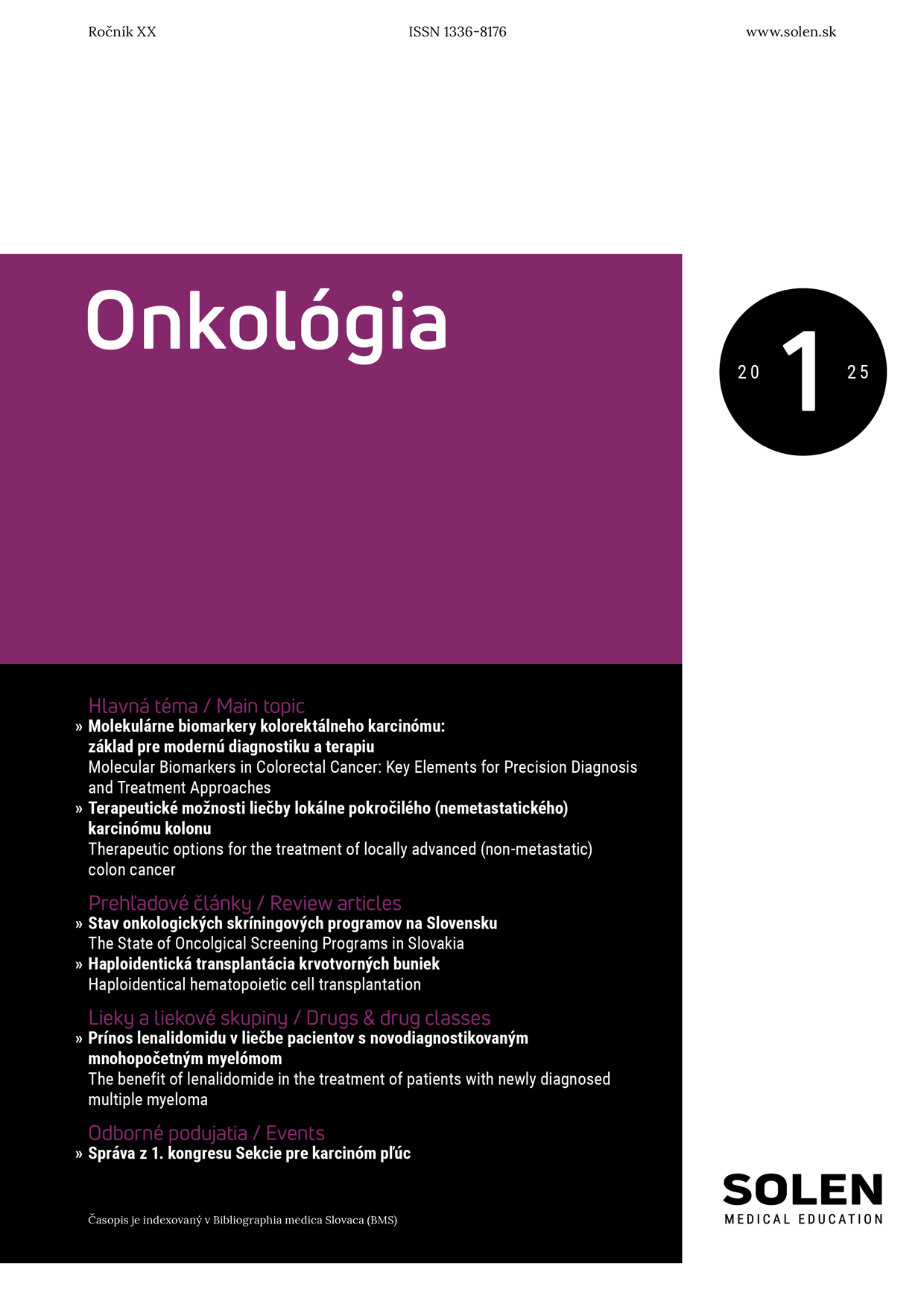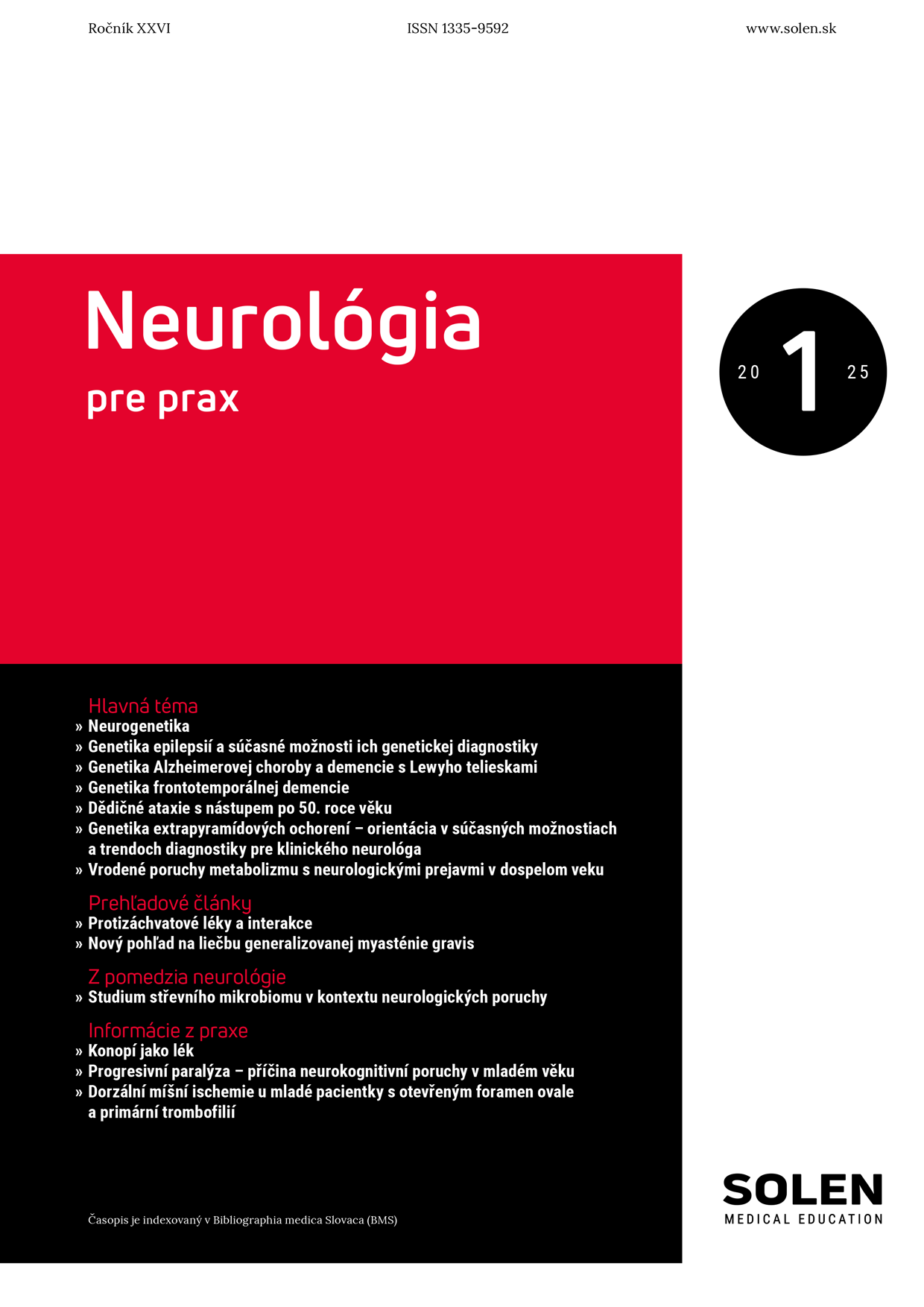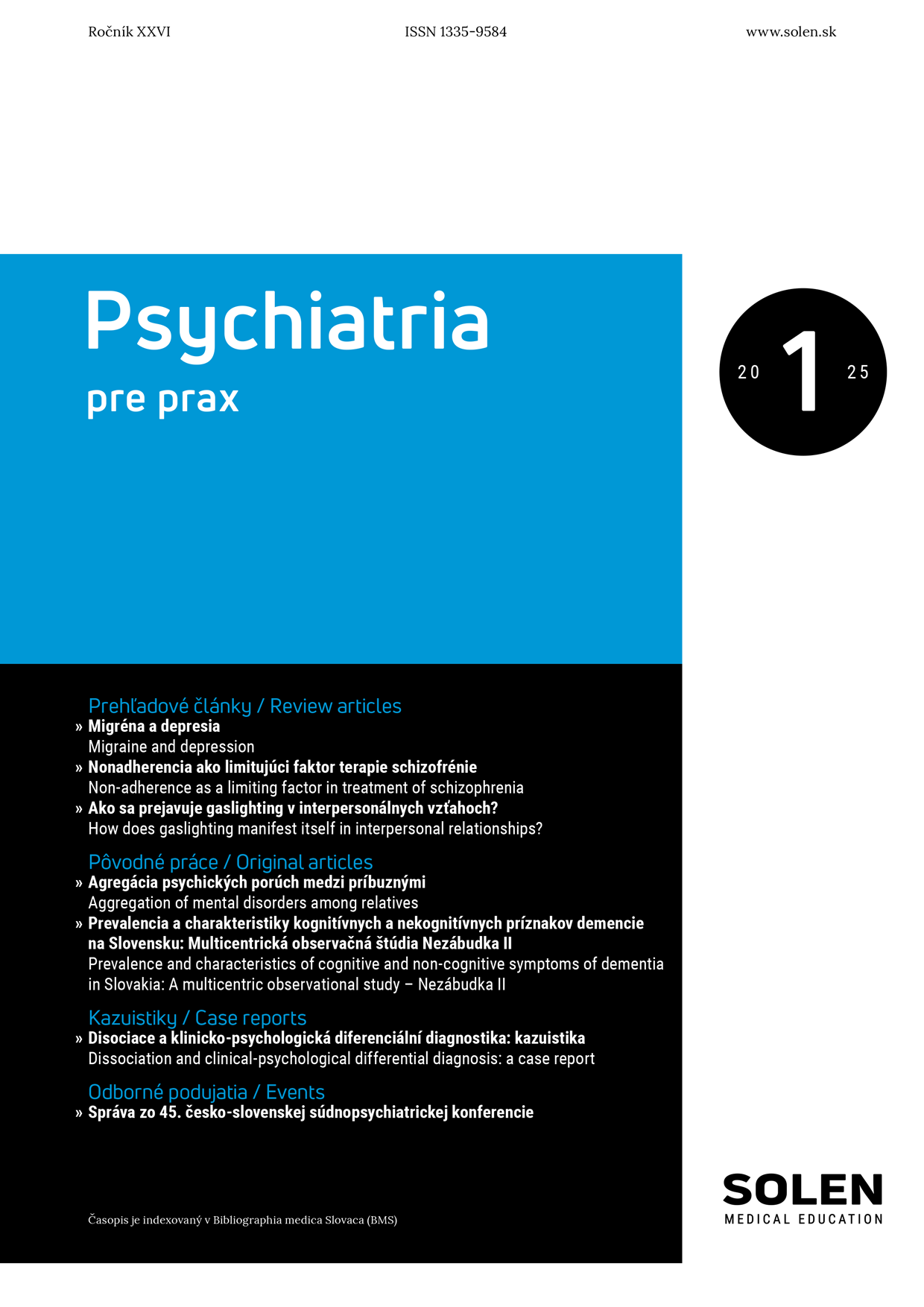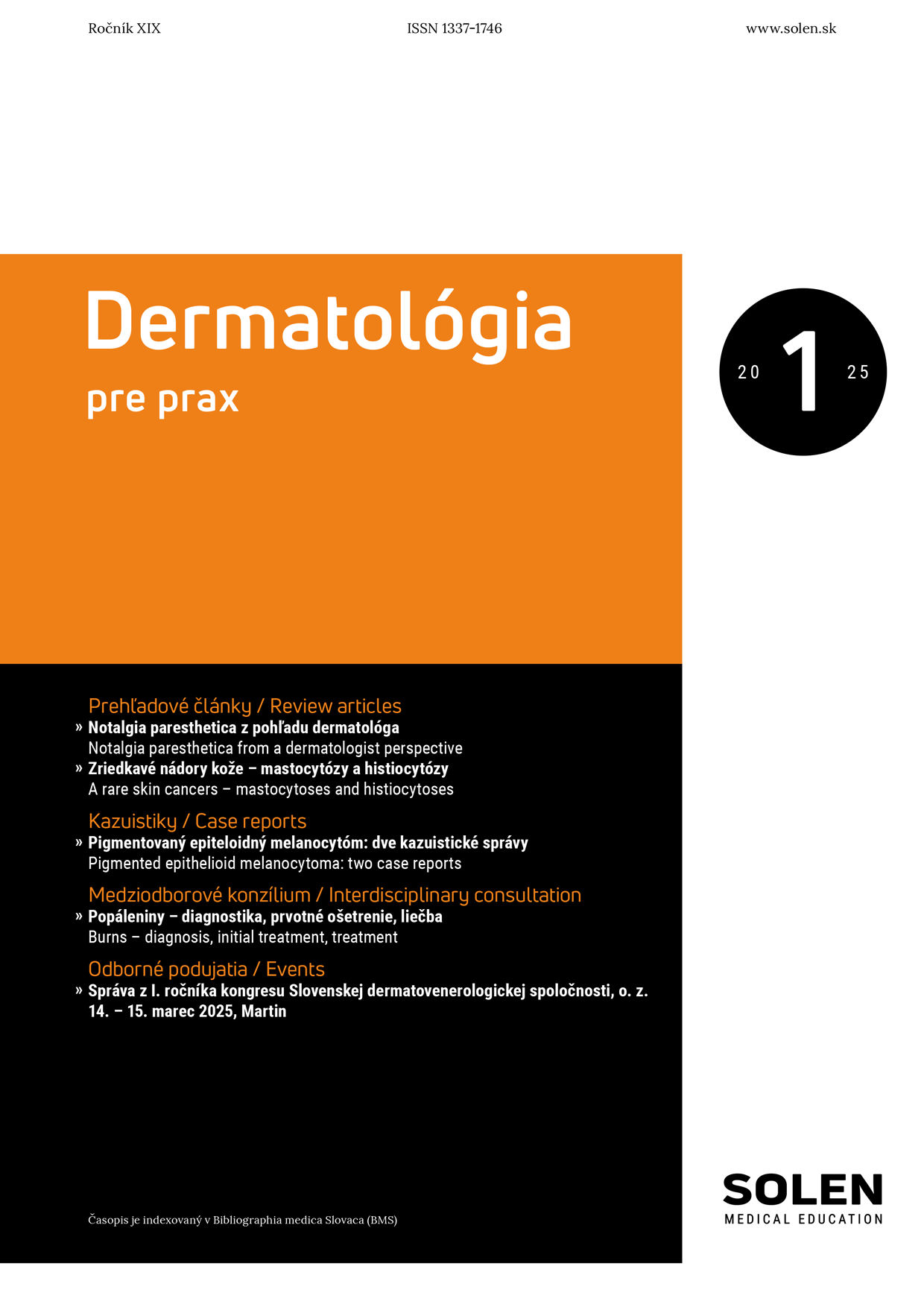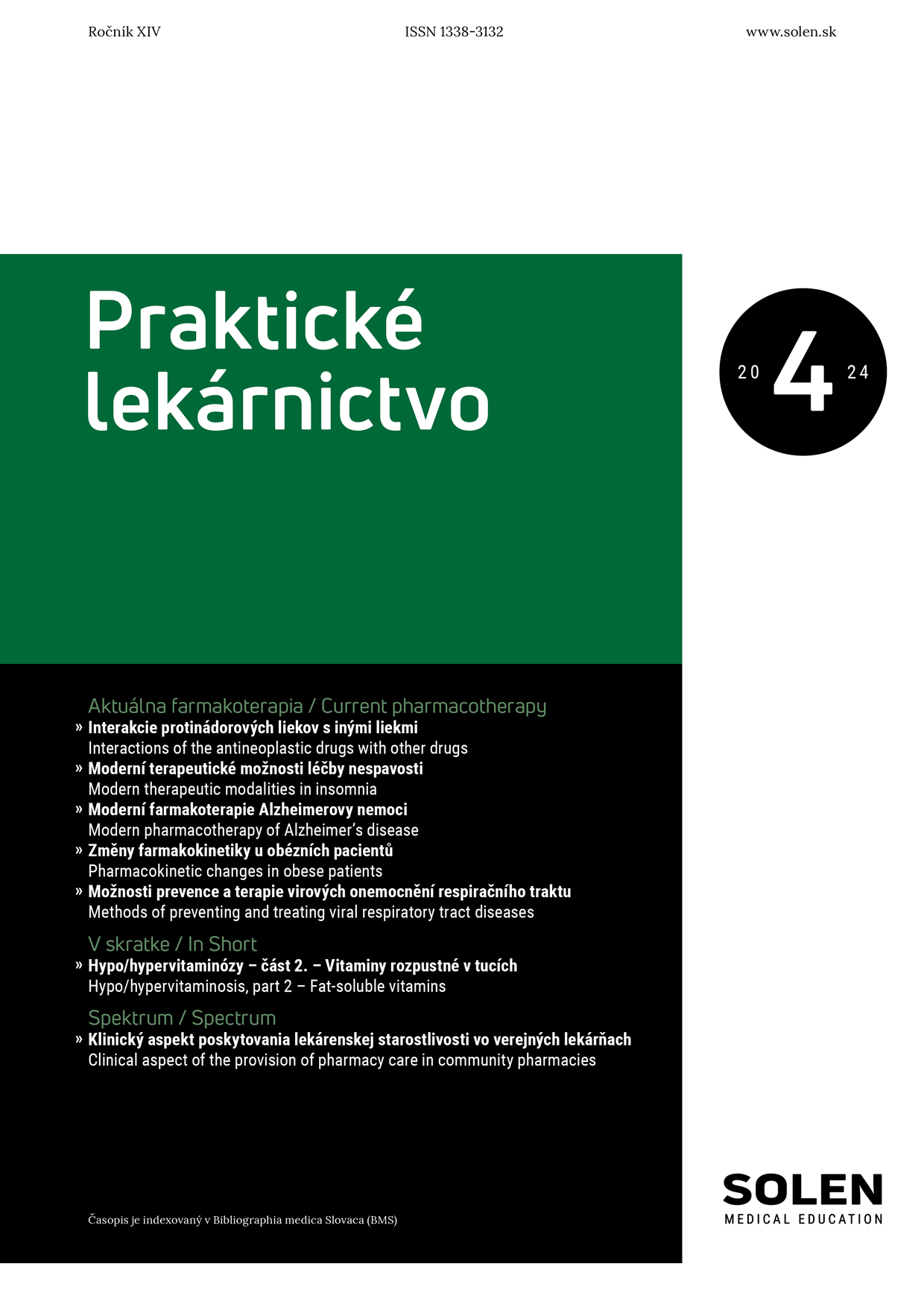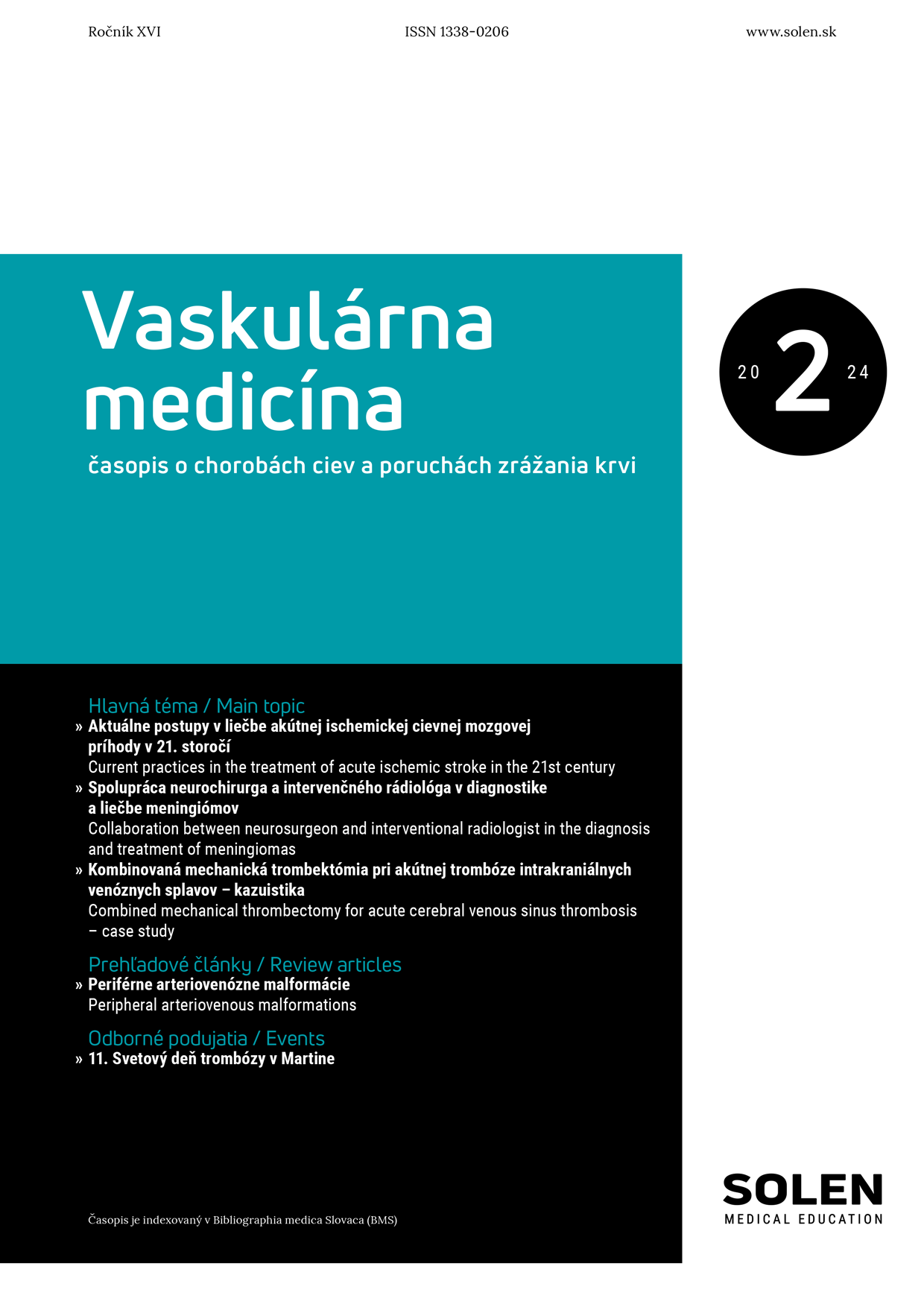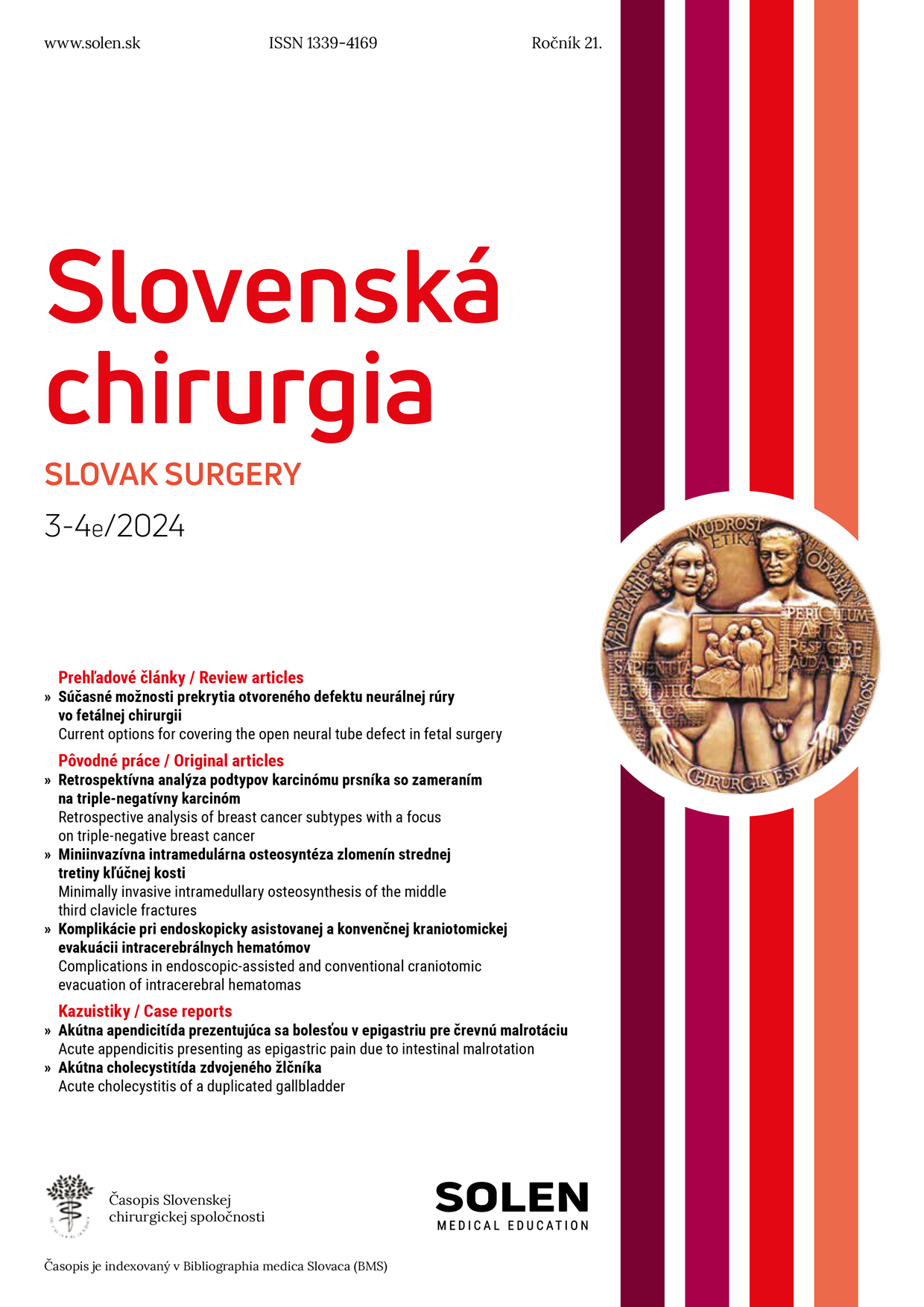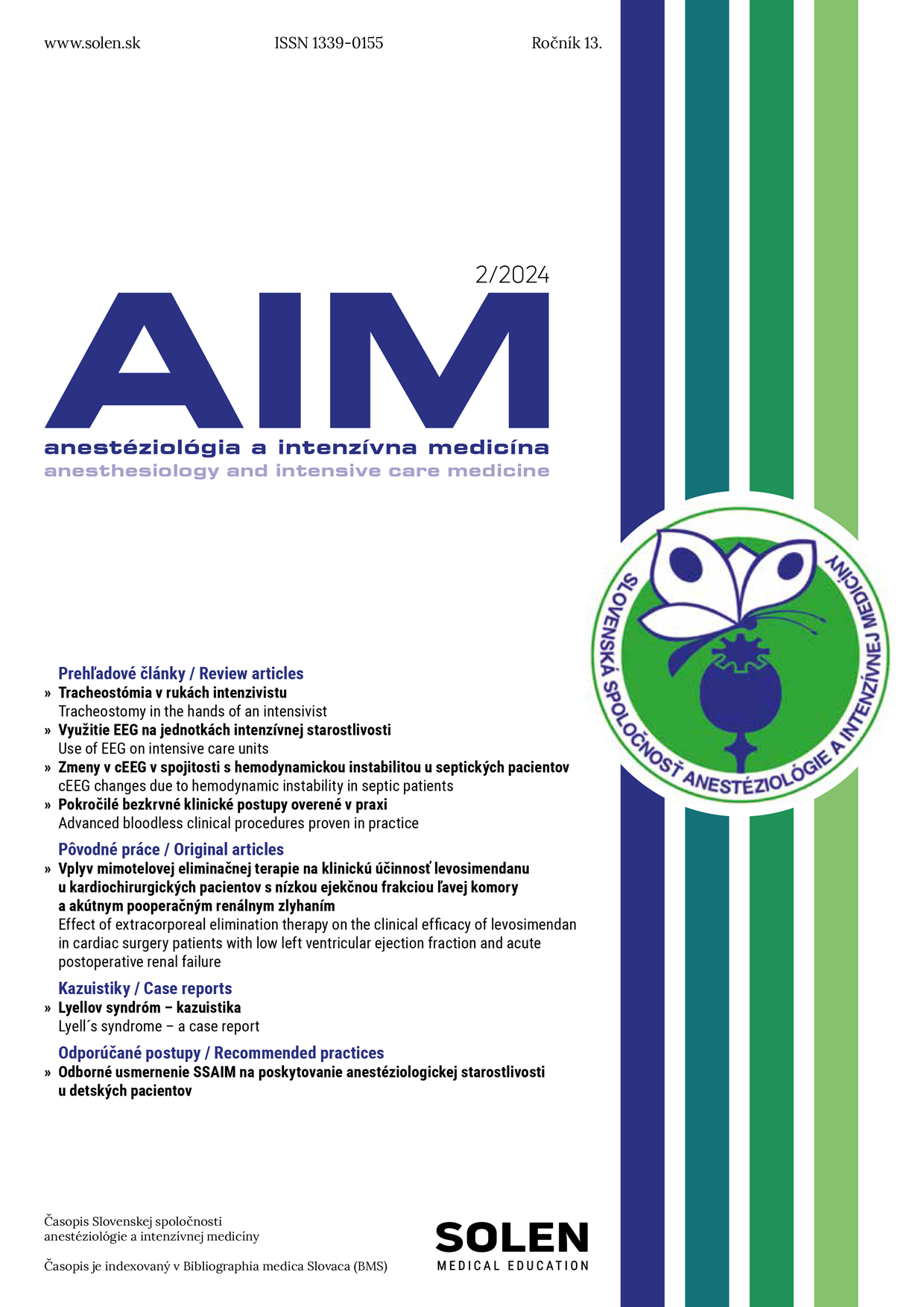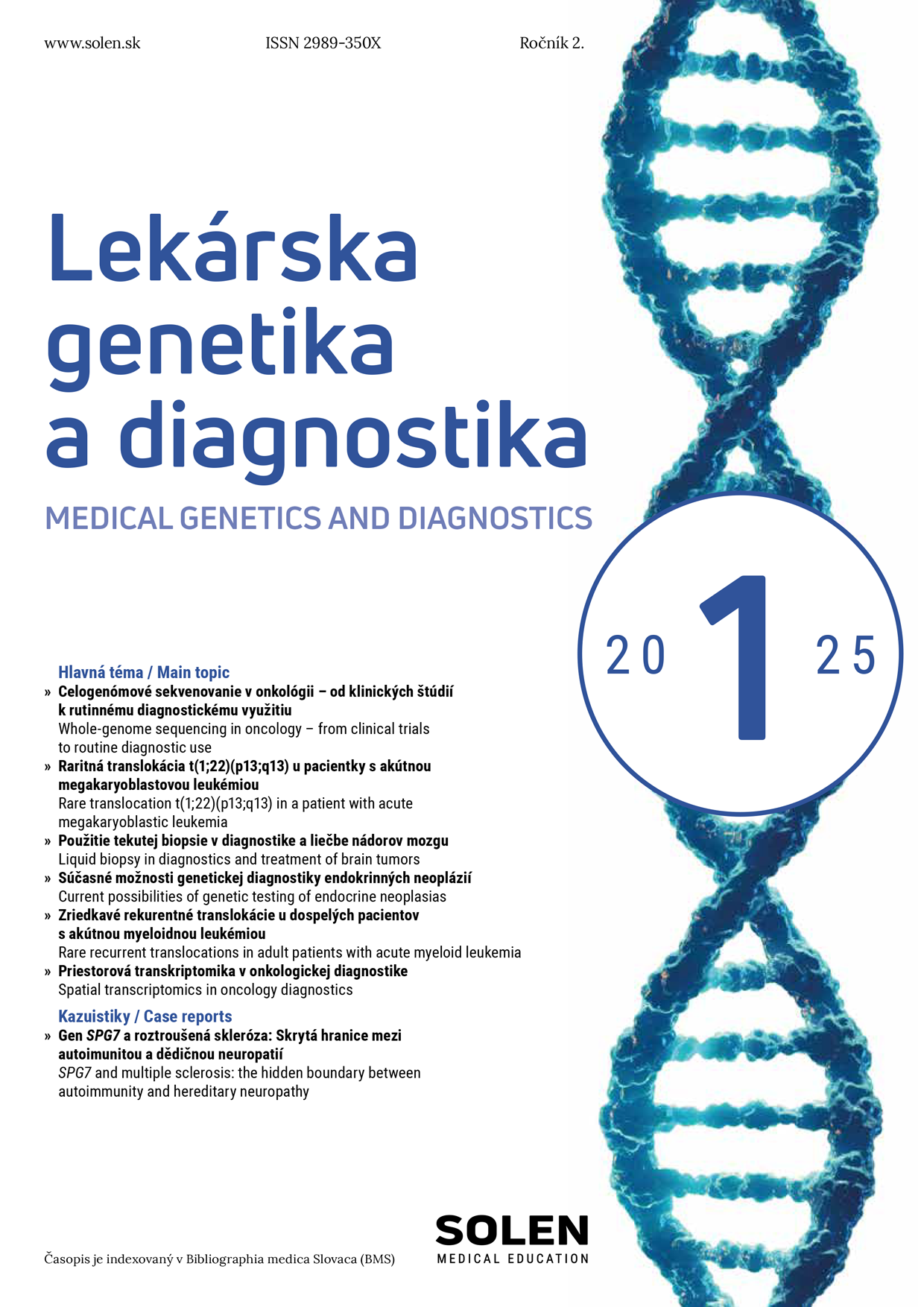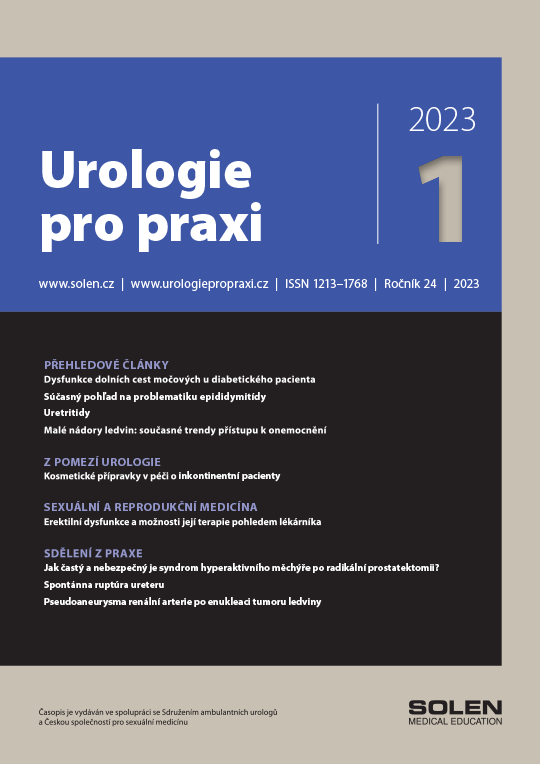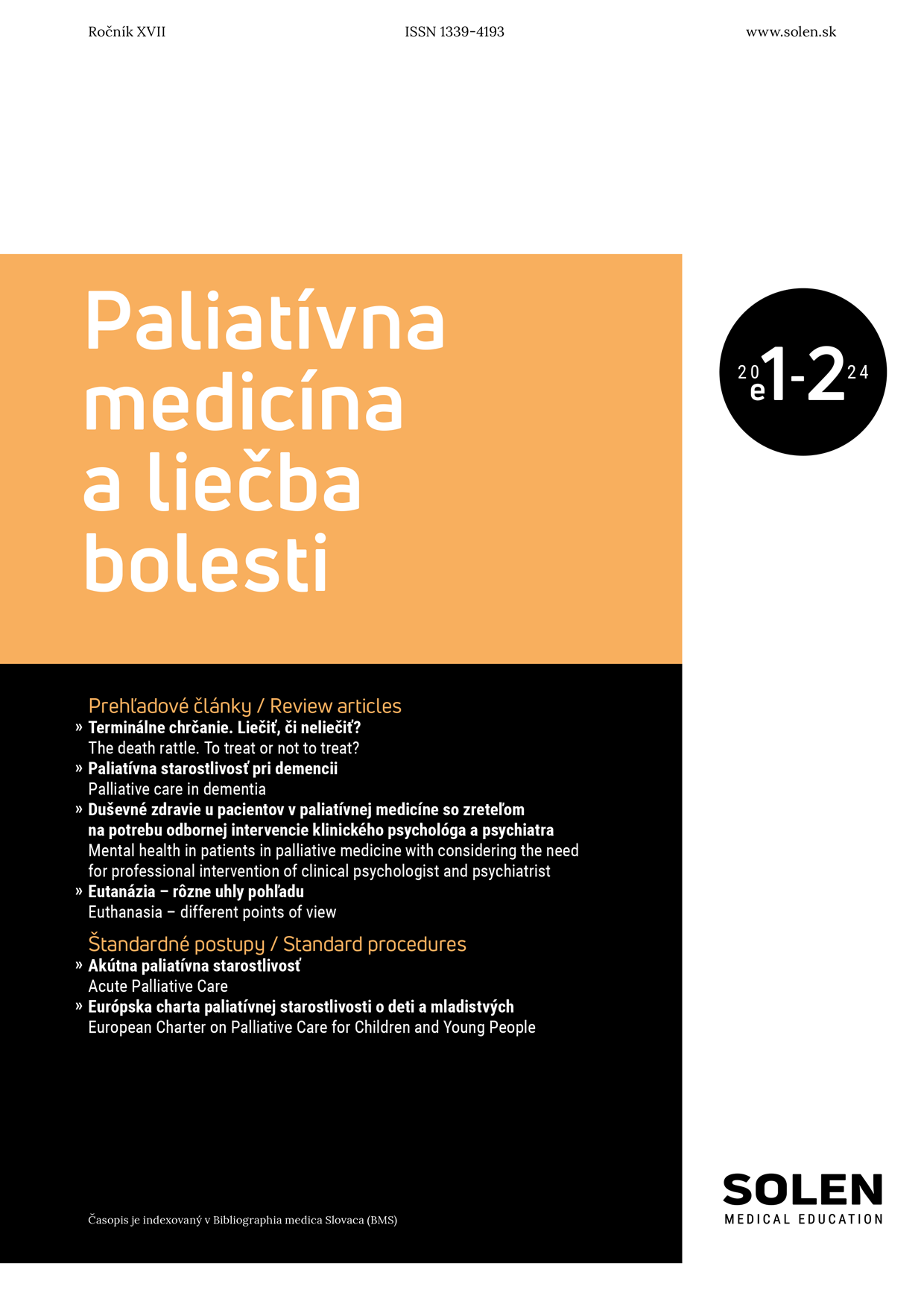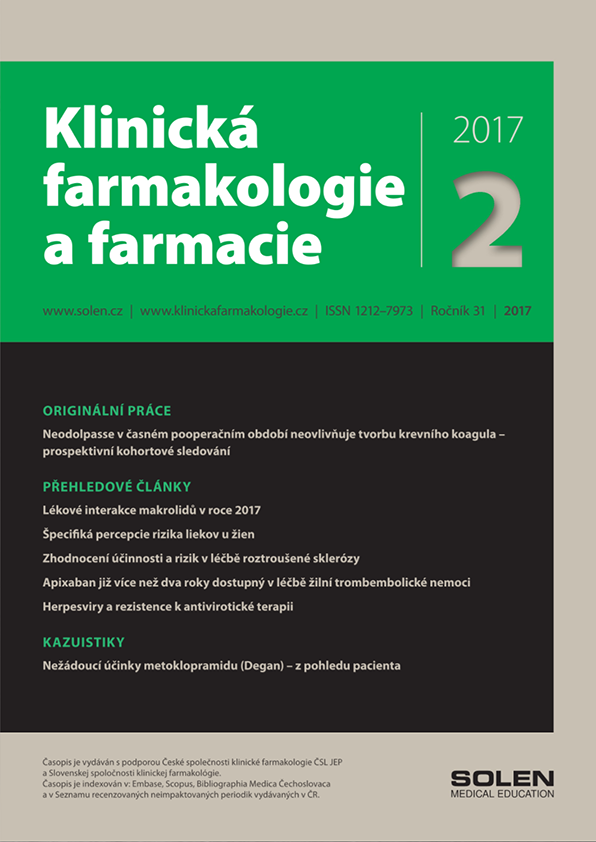Manuscript must be submitted in electronic format via email to: redakcia@solen.sk. Submission of a printed manuscript is not required.
The Editorial team reserves the right to make minor stylistic adjustments to the text without consulting the author, who will be informed during the proofreading process. The editorial team also reserves the right to reject texts that do not align with the journal's concept or have not been approved through the peer review process. If necessary, the author's consent will be sought to shorten the manuscript. In case of any formal deficiencies, the manuscript will be returned to the author for revision.
The editors team reserve the right to self-manage the inclusion of unsolicited manuscripts that have passed the peer review process.
Given the journal's practical focus, manuscripts should be written in a clear manner, emphasizing the practical application of the provided information in clinical practice.
Authors and co-authors are required to familiarize themselves with the rules of publication ethics, available in full on the journal's website. When submitting an article for publication, the main author must send a written declaration to the editorial office stating that the entire authorial collective is aware of the publication ethics rules and that there are no impediments to publishing the article.
Legal relationships between the publisher and the author are governed by the provisions of the Copyright Act.
Review Articles
- The latest findings on etiology, pathogenesis, diagnosis, and treatment of diseases and groups of conditions. The maximum length is 8 pages of text (font size 12, line spacing 1.5) with up to six images (graphs). In the case of processing more extensive topics, it is possible to divide the contribution into several parts after consultation with the editorial board. Write the article with an emphasis on its practical application for urologists, specialists from other fields related to urology, and general practitioners.
- Please, don't forget to cite as many works by Czech and Slovak authors as possible related to the given topic. Their sufficient number will be positively evaluated during the subsequent peer review process.
Sexual and Reproductive Medicine for Practice
- Review articles containing the latest knowledge in the field of andrology and sexology.
Communication from practice (Case Reports)
- Maximum length of 6 pages (font size 12, line spacing 1.5).
- Illustrative visual documentation is welcome. The case report should include the following sections: abstract, introduction, description of the case, discussion, conclusion.
- (Patients have the right to privacy, which must not be violated without their informed consent. Identification data must not be included in the written text, photographs, or pedigrees unless this information is essential from a scientific perspective and the patient has given informed consent for its publication. In this case, the patient must be familiarized with the manuscript.)
Comments
* Reactions to review articles, updates in the field of diagnostics, therapy, interesting findings from foreign press, and other professional information, with a maximum length of two pages.
Pharmacological Profile
* Information about specific drugs. The structure of articles in this section includes classification into drug groups, chemical structure, mechanism of action, indications, contraindications, side effects, dosages, and interactions.
Briefly /In short
* Diagnostics and therapy presented in tables and charts, with an emphasis on clarity and practical application of the provided information.
Advice for practice
* The aim of this section is to provide quick and practical advice, responding concisely and comprehensibly to specific questions.
For Nurses
* A section in which nurses inform other nurses about their approaches, procedures, or generally applicable recommendations.
Information
* Information about professional events, new books, reviews, conference reports, invitations, and more.
Journal Article:
Halpern SD, Ubel PA, Caplan AL. Solid-organ transplantation in HIV-infected patients. N Engl J Med. 2002 Jul 25;347(4):284-7.
Author. Article Title. Abbreviated Journal Name. Year;Volume(Issue):Page Range.
Hnízdil L, Procházková I, Jedlička V, et al. Adenom příštitného tělíska. Onkologie. 2013;7(5):252-5.
If there are multiple authors, list the first 3 authors, followed by et al.
Vallancien G, Emberton M, Harving N, et al.; Alf-One Study Group. Sexual dysfunction in 1,274 European men suffering from lower urinary tract symptoms. J Urol. 2003;169(6):2257-61.
Monograph:
Kolář J, Zídková H. Nárys kostní radiodiagnostiky. Praha: Avicenum; 1986.
All authors (or editors, organizations). Title. (Subtitles). Place: Publisher; Year.
Chapter in a Monograph:
Meltzer PS, Kallioniemi A, Trent JM. Chromosome alterations in human solid tumors. In: Vogelstein B, Kinzler KW, editors. The genetic basis of human cancer. New York: McGraw-Hill; 2002. p. 93-113.
Article in Conference Proceedings:
Christensen S, Oppacher F. An analysis of Koza's computational effort statistic for genetic programming. In: Foster JA, Lutton E, Miller J, Ryan C, Tettamanzi AG, editors. Genetic programming. EuroGP 2002: Proceedings of the 5th European Conference on Genetic Programming; 2002 Apr 3-5; Kinsdale, Ireland. Berlin: Springer; 2002. p. 182-91.
Doctoral Thesis (Dissertation):
Borkowski MM. Infant sleep and feeding: a telephone survey of Hispanic Americans [dissertation]. Mount Pleasant (MI): Central Michigan University; 2002.
Newspaper Article:
Tynan T. Medical improvements lower homicide rate: study sees drop in assault rate. The Washington Post. 2002 Aug 12;Sect. A:2 (col. 4).
Internet Article:
Knopová M. Bezpečnost dat v informačních systémech. Ikaros [Internet]. 2011; 15(6) [cited 2011 Jun 14]. Available from: http://www.ikaros.cz/node/6946.
Authors. Title of the contribution. Journal Title [Internet]. Year; Volume (Issue):page range [cited citation date]. Available from: DOI or URL.
Monograph on the Internet:
Foley KM, Gelband H, editors. Improving palliative care for cancer [Internet]. Washington: National Academy Press; 2001 [cited 2002 Jul 9]. Available from: https://www.nap.edu/catalog/10149/improving-palliative-care-for-cancer.
All authors. Title of the publication. Subheading. [Internet]. Place: Publisher; Year [cited citation date]. Available from: DOI or URL.
Website (unknown author):
Výzkum a vývoj v České republice [Internet]. Praha: Rada pro výzkum, vývoj a inovace; c2011. [cited 2011 Jul 27]. Available from: http://www.vyzkum.cz.
Contribution on a Website:
Tichá J, Tichý M. Jméno Zdeňka Milera nese jedna z planetek obíhajících kolem Slunce. In: Věda.cz [Internet]. 2011 Apr 21. [cited 2011 Jul 27]. Available from: http://www.veda.cz/article.do?articleId=68377.
Author(s). Title of the contribution. Additional information about the contribution. In: Title of the website / webpage. [Internet]. Place of publication: Publisher; publication date. Date of update [cited citation date]. Available from: DOI or URL.


